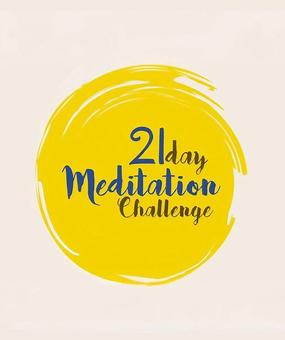We’ve all experienced it: we arrive at work, ready to check off all of the tasks we have in our mind. We write a to-do list of all of our goals for the day, feeling inspired by everything we plan to accomplish. The clock says 9:00 AM and we think, “Wow – an entire 8 hours. I have plenty of time to finish my work!” Then we open Facebook, Twitter, Instagram, news websites, blogs, text messages, and GChat, and before we know it the clock says 3 PM and we only have 2 hours left to complete a mountain of work. Not only do we feel panicked, but we may feel accompanying feelings like frustration at our own inability to focus, and resentment at our lack of willpower. Before we get down on ourselves for lacking focus and willpower, it’s important to understand WHY we feel so addicted to distraction.
Let’s face it, we live in a world of unprecedented distraction. Most modern day workers sit in front of a desk for hours on end, which is often much less fun and appealing that what social media and the internet have to offer. Everywhere we turn our heads there seems to be distraction, from our phones to our computers, to OTHER people’s phones and computers. The constant stimulation from these devices offers a never ending flow of new information and notifications that triggers a dopamine response in the brain. This literally has an addictive effect on the brain. Notifications and new information that relate to our interests make us feel, good, at least in the immediate moment. However, the high fades and leaves us wanting more!
Given the science, it makes sense that we opt for distractions, as most people’s work does not offer the immediately gratifying effect that dopamine has on the brain. However, what completing work tasks does is offer something different–the long-term satisfaction of accomplishing a focused assignment. And while there might not be an immediate hit of dopamine, focused work gets us into what scientists call the flow state, which leaves us feeling satisfied and accomplished with our lives. Flow, or total absorption in the present moment, is characterized by a lack of self-awareness and thoughts, where time vanishes and performance is optimized. Basically, entering the flow state, which happens when we do focused work, leaves us feeling satisfied at a much deeper level than the simple dopamine hit from notifications. And the more we experience flow, the better we feel about our lives.
So, how can we manage distraction and get into this state of focused flow more often? Integrate these 6 strategies for dealing with distraction into your day and experience the buzz that comes from getting work done!
1. Create a Gadget-Free Morning Routine
Do you ever wake up in the morning and immediately reach for your phone to read the news or check emails? Looking at your phone immediately upon waking not only triggers stress, but it immediately puts your brain into a reactive state seeking stimulation and that dopamine response we talked about earlier. Instead of reaching for your phone, create a morning routine that sets you up for success, ideally waiting at least an hour (if not longer) before turning on your phone. Not sure where to start? Consider adding a few (or all!) of these activities into your morning routine:
- Meditate
- Practice yoga or other forms of exercise
- Journal
- Organize your priorities and schedule for the day
- Write out a gratitude list
- Spend time with loved ones
- Drink tea and eat a peaceful breakfast
- Get outside into the fresh air
You will be amazed at how focused and centered you feel throughout the day!
2. Meditate
Meditating daily is one of the best ways to increase focus, attention span, and productivity. Scientific studies show that meditation actually changes the structure of the brain and increases grey matter. Meditation is best practiced first thing in the morning, as it primes your brain for focus throughout the day. However, meditating at any time is better than none! Various forms of meditation are beneficial for focus, especially mindfulness and mantra-based meditation such as the Sahaj Samadhi technique offered through the Art of Living Foundation.
3. Use a Time-Management Tool
Creating strategies to use time effectively is crucial for the person who gets easily distracted. Tools such as the “Pomodoro Technique” help those with difficulty managing time to create digestible pockets of concentrated work with regular breaks. The Pomodoro Technique suggests that you set a timer (they use a trademarked tomato timer) for 25 minutes and take 5 minute breaks between each 25 minute segment. After 4 rounds, it is suggested that you take a longer break, before starting the rounds again. While 25 minutes might not seem like a long time, you will be amazed how much you get accomplished in a short period of time, and how satisfied you feel!
Taking breaks is an important part of time management, as focus and productivity is a very masculine energy that can lead to burnout. Balancing the masculine energy of focus with the feminine energy of rest, relaxation, and fun will result in a larger bandwidth for productivity and greater happiness. While on break, consider interacting with coworkers and friends, walking outside, stretching, drinking water, and listening to music.
4. Exercise and Yoga
Exercise brings fresh oxygen to the brain, supplying you with greater amounts of energy and focus. Yoga especially trains the mind to stay in the present moment and cultures the nervous system to get used to focusing on one task at a time for longer periods of time. What’s more, exercise and yoga support the health of the prefrontal cortex, which helps in controlling urges and impulsive behaviur. For greater productivity early in the day, try exercising first thing in the morning.
5. Use an App Blocker
Telling yourself to turn off your phone or internet browser often isn’t enough, and managing distractions often requires us to be our own parent. If you find yourself compulsively flipping between browser tabs and opening your social media apps when you know you should be working, download an App Blocker on your Phone and Website Blocker on your computer. Sometimes we need an outside authority reminding us what no to do, and app blockers function as that authoritative “NO!” StayFocused for the Chrome Browser even has a “nuclear option” that prevents you from disabling it when activated.




















